Many of us are accustomed to dwarf cats, dogs and even horses but here are some other amazing creatures. Hearing the word “antelope”, we usually imagine a graceful and rather big deer-like animal. Nevertheless, can you imagine a hare-sized antelope? There are some species (so-called ‘’dwarf antelopes ‘‘) that are completely different to your first impression because of their size: Royal antelope, Dik-Dik, Steenbok, Klipspringer, Oribi.
Let’s take a closer look to them.
Royal Antelope
Sometimes one can hardly discern this dweller of West-African lowland rainforest in the grass. With the maximum size of 10-12 inches and weight of 3.5 kg it is recognized as the smallest antelope on the planet. Moreover, their babies are so tiny that can fit into an average human’s open hand.
Indeed, Royal antelope’s physical appearance is very similar to a hare. It has an overdeveloped back end, hind legs that are twice as long as forelegs, and big and expressive eyes. However, there is a big difference between this cutie and a hare: ears, they are transparent and small.
Another distinction is the color. Royal antelopes are light brown with slightly darker heads and sides. Do you think they need horns? They are deer, aren’t they? Yes, males have short, pin-like horns up to 2.5 cm long.
As many other small animals, they are very agile and shy. It is believed that they can jump 2.5 meters in a while if disturbed. Surprisingly, royal antelopes do not like big companies. They usually live on their own or sometimes in pairs, avoiding association in the herd.
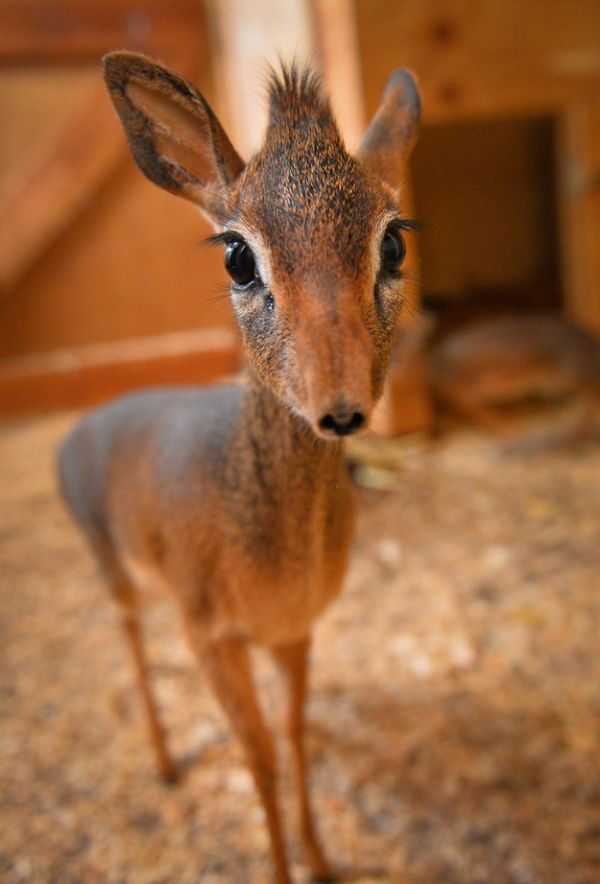
Royal antelope
Dik Dik
This funny name comes from the loud whistling sound that the animals produce when marking their territory, similar to ‘’dik dik’’. Moreover, they use this signal as an alarm, when danger is somewhere nearby.
Dik-diks are a bit bigger than royal antelopes; they can reach 14 inches in height and 5 kg in weight. The notable feature of their appearance is big and beautiful eyes. They are decorated with white circles, which is reminiscent to the rim of stylish glasses. Despite their small size and an angel look, these guys have a cocky character.
You will hardly meet dik diks in open spaces of the wild nature. They make their own trails and tunnels, which other animals will not overcome. Therefore, they are not afraid of neither hyenas, nor leopards or other big predators.
Males are usually smaller than females, but they are armed with 10-cm sharp horns. However, bloody fights are very rare: one of rivals usually gets out in the bushes during territory contests. Dik diks are able to develop speed up to 42 km/h on short distances. That is more than enough to reach the bush shelter.
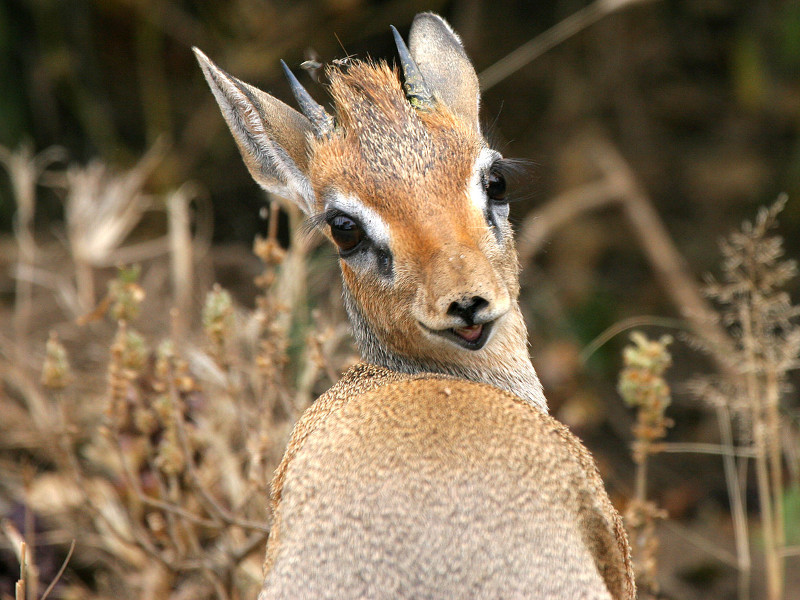
Dik Dik
Steenbok
This antelope living in South Africa is much larger than the previous two – with the height of 70-95 cm and the weight of 7-16 kg. They also ‘’wear fashionable white googles’’, like dik diks. Another amazing feature is a slender black triangle that starts from the nose and tapers upwards. But, unlike the mentioned antelopes, it has big ears. Maybe because of that they have an excellent hearing.
Horns that can be found in males are more formidable: being straight and sharp, they grow to 7-19 cm long. Nevertheless, they do not use them in most events of threat, laying on the ground and freezing or running away in a shelter.
Steenboks are very delicate: they are the sole bovid who dig the ground before and after urination and defecation. A well-mannered antelope!
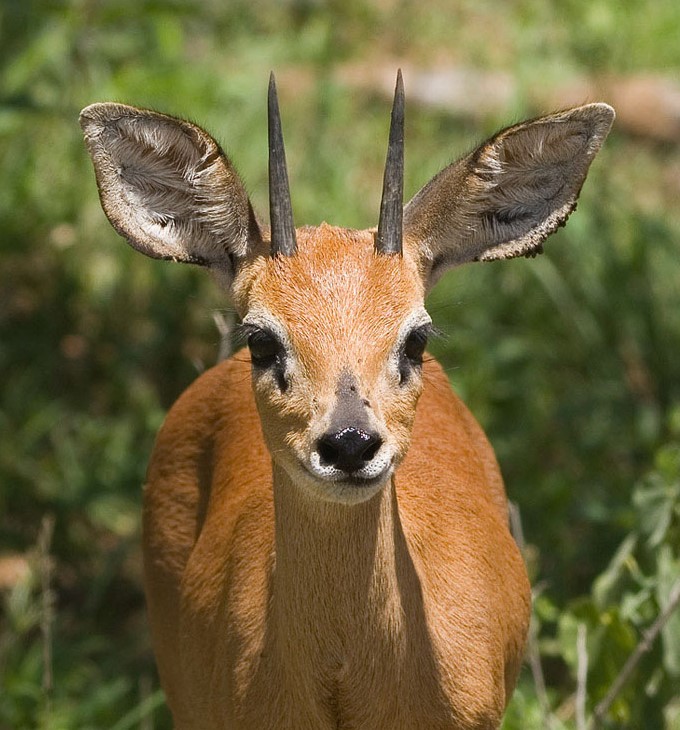
Steenbok
Klipspringer
Another inhabitant of South and East Africa has received its strange name from the word in Afrikaans, which means literally “a rock jumper’’. That alludes to its ability to move with gentle ease in rocky areas. The secret is in their hoofs – they look like two tiny and tender rubber fingers, but quite hard in reality. Thanks to those hoofs, antelopes can freely jump in the rocks and maintain the balance. Another prominent feature is a large black pre-orbital gland. Like steenboks, their males also have horns, which are short and spiky, reaching 7-9 cm long.
Klipspringers’ typical weight is 11-13 kg with the height of 50-60 cm. They like to wear various coats – it can be grey, brown, yellow or red with white marks on the belly, chin and lips. Antelopes have rounded ears placed far back on the head with prominent black stripes.
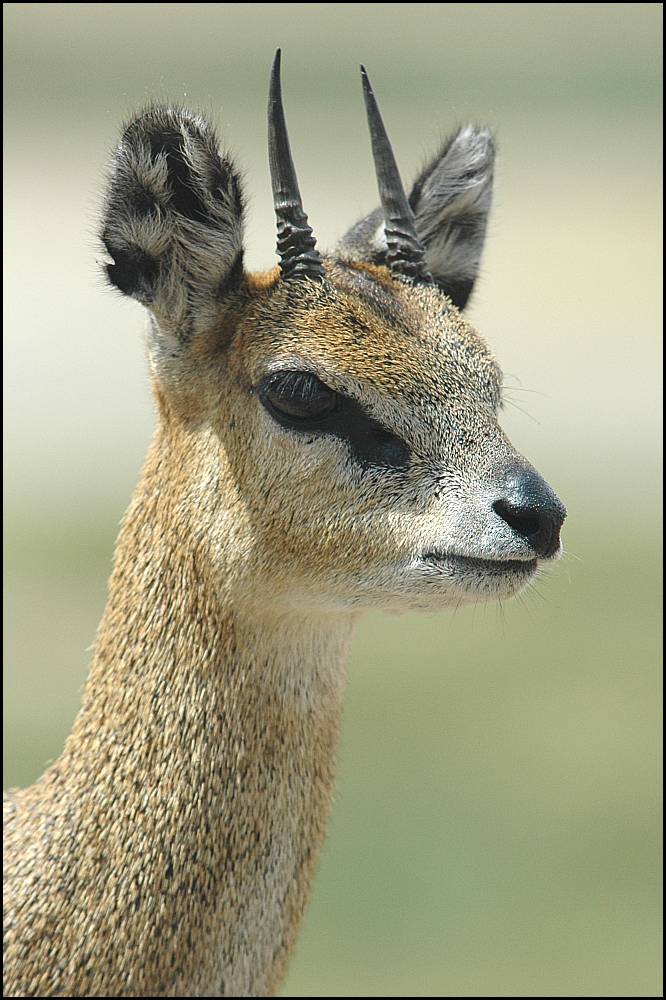
Klipspringer
Oribi
Oribi is another dwarf antelope, which inhabits in northern and southern African savannas. They are not the smallest species among small antelopes – their height can reach 70 cm in shoulders and the weight can be up to 20 kg. Oribi do not have “fashionable googles “, they have only a white crescent shaped stripe above the eye. Ears are oval and white with dark patches inside. Only males have horns, which may grow up to 19 cm long.
Unlike many small antelopes, oribi have various models of mating system and can form mono groups or small herds.
These are also whistling antelopes. They are able to produce a loud whistling alarm, when they are in danger. Then, they try to scuttle from the threat.
Well, quite a nasty fact. Oribis are famous for their ‘’dung ceremony’’, when antelopes make dung middens to stake territorial claim. Also, the inspection of female droppings and defecation on the top of them is the major social interaction between male and female oribi. By means of that, a female oribi have familiarity with its male.
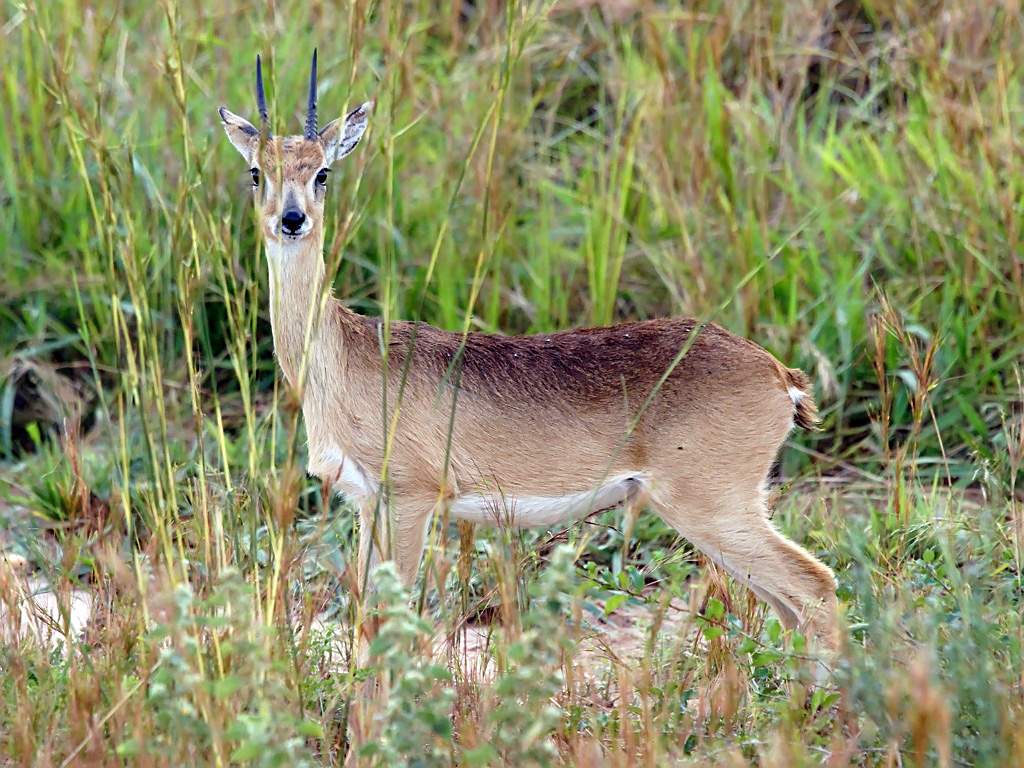
Oribi